England’s closing decades of the 18th century teemed with scientific triumphs, unstoppable expeditions to distant seas, and a shifting cultural tide that introduced Romantic aesthetics to a once-enlightened realm. This was the backdrop upon which Robert John Thornton would stake his legendary claim—a claim that sought to unite Linnaean botany, aesthetic grandeur, and national ambition into a single work.
But before his magnum opus, Thornton’s life path appeared destined for the pulpit. Born in Yorkshire in 1768, the future botanical figurehead was the son of Bonnell Thornton, a wit and literary figure in his own right. From a young age, Robert John Thornton sensed the thrum of possibility in the air—indeed, the era itself seemed to whisper promises of transformation and fame for those daring enough to chase them.
Key Takeaways
- An Age of Romantic Discovery: Thornton’s ambitious project blossomed at the crossroads of scientific rigor from the Enlightenment and the emotional sweep of Romanticism, capturing the era’s fervor for exploration and artful expression.
- A Lifelong Botanical Calling: Initially set on a clerical path, Thornton pivoted toward medicine and botanical research under the profound influence of luminaries like Carl Linnaeus and Thomas Martyn, forging a life propelled by curiosity and devotion to the natural world.
- The Monumental “Temple of Flora”: Conceived as more than an illustrated reference, Thornton’s opus strove to evoke wonder, awe, and a deep emotional resonance through dramatic landscapes and an array of pioneering printmaking techniques.
- Financial Dares and Desperation: Lavish production costs, fleeting public tastes, and mounting wartime pressures conspired to thwart Thornton’s fiscal hopes—culminating in the ill-fated Royal Botanical Lottery.
- A Legacy that Bloomed Eternal: While “The Temple of Flora” failed to deliver Thornton the wealth he sought, it stands today as an enduring testament to his visionary fusion of science, art, and cultural pride.
A Scholar Takes Root
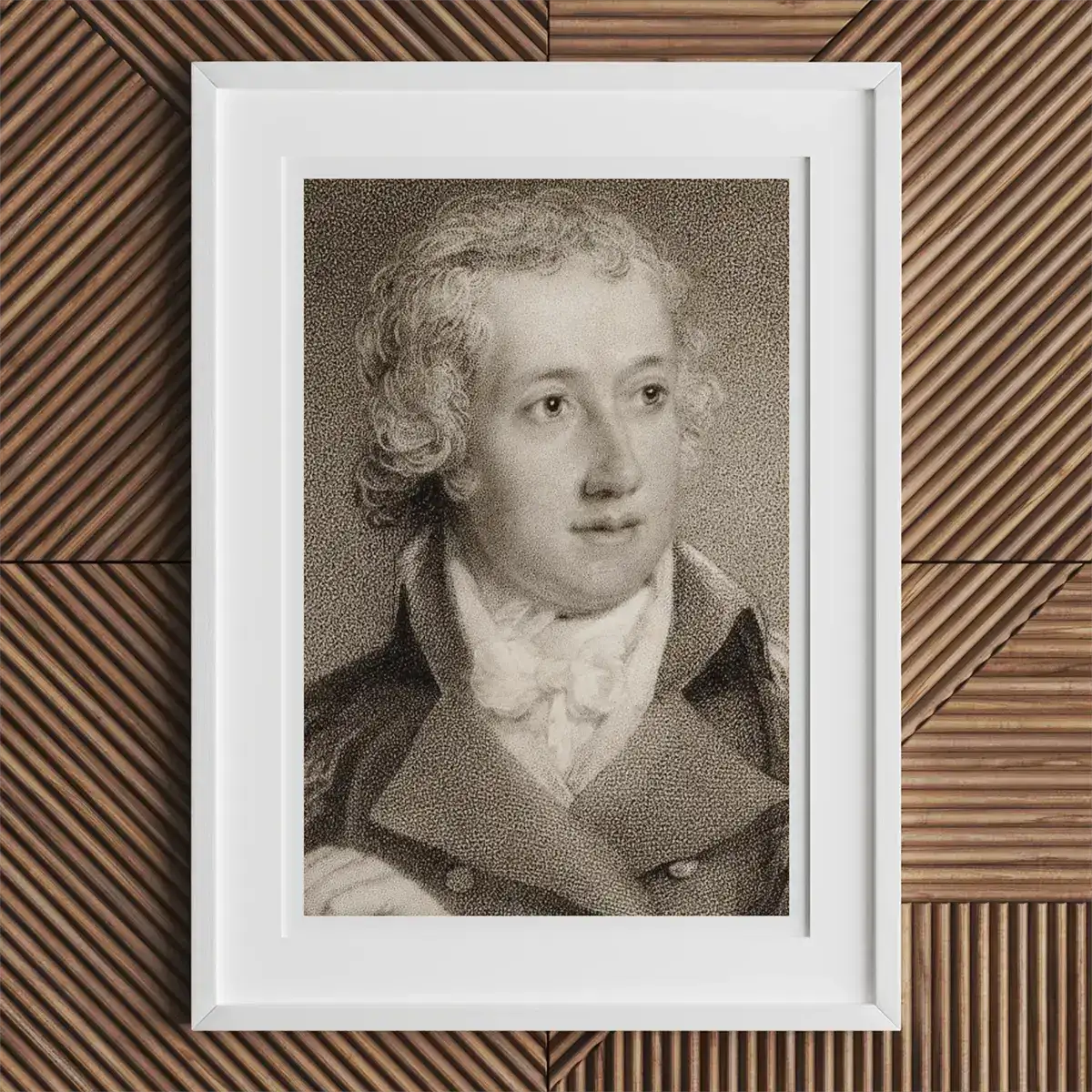
Thornton’s formal education unfolded at Trinity College, Cambridge, with an initial plan to join the clergy. Yet, within these stately halls, an intellectual lightning bolt struck when he crossed paths with Thomas Martyn, whose botanical lectures crackled with the latest revelations in plant science. In particular, Martyn illuminated the revolutionary approach of Carl Linnaeus, a Swedish naturalist advocating plant classification by counting and comparing the sexual parts of flowers.
For Thornton, the Linnaean system was more than a clever taxonomic framework—it was a revelation. Plants were no longer silent ornaments but intricate participants in a web of existence, each species proclaiming its unique voice in a universal chorus. Eagerly, Thornton cast off any lingering clerical aspirations and turned to the study of medicine, understanding that medical practice and plant knowledge often walked hand-in-hand.
His subsequent medical pursuits led him to Guy’s Hospital in London, where he would lecture on medical botany—a role that fused practical healing with scientific theory. No mere side interest, botany stood at the core of Thornton’s worldview, informing every aspect of his intellectual being. That fervor would soon drive him to conjure one of the grandest botanical initiatives in British publishing history.
The Botanical Calling: Linnaeus Beckons
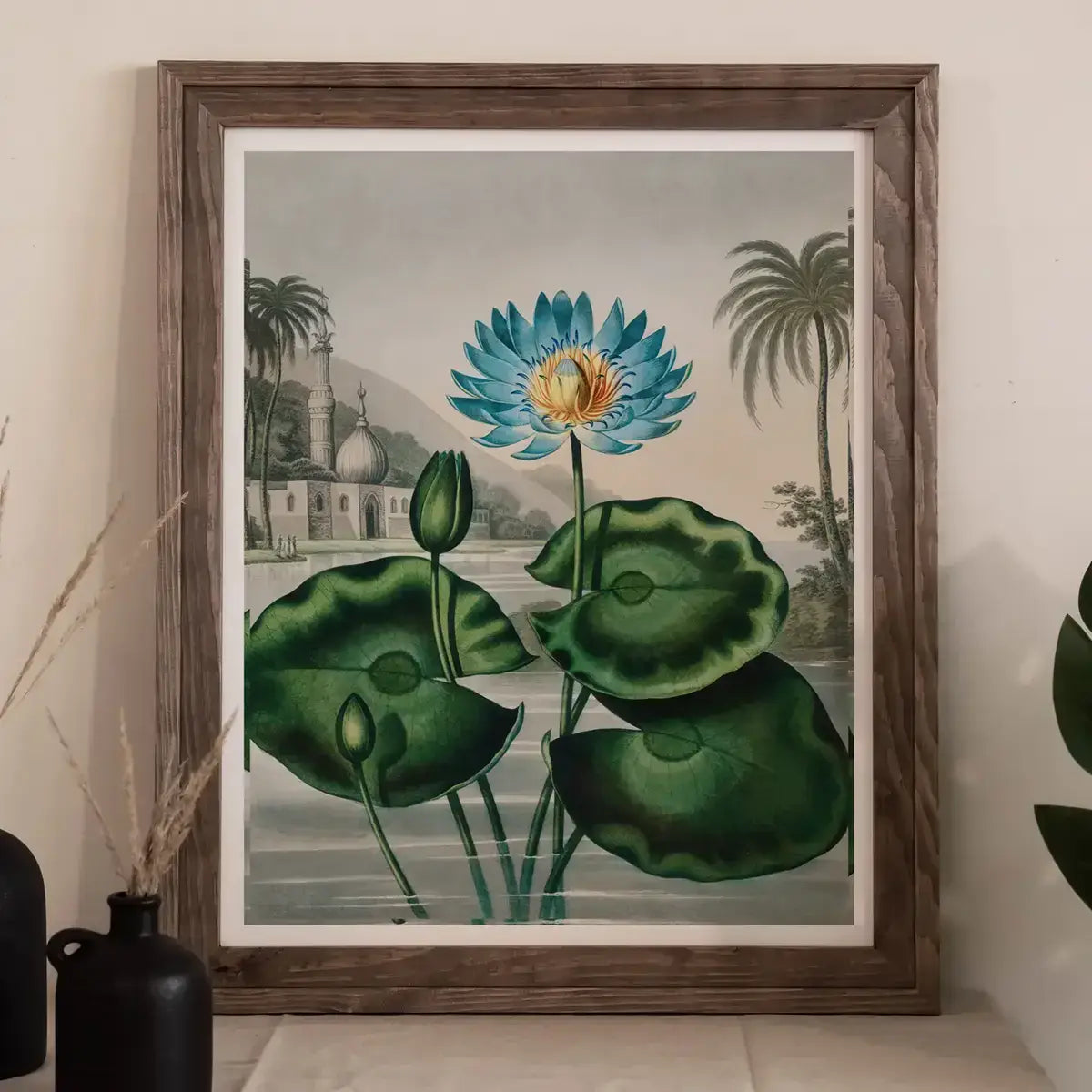
From the start, Thornton’s consuming fixation on Carl Linnaeus shaped his greatest ambitions. Linnaeus had reoriented the landscape of botany by using the flower’s stamens and pistils as a clear, standardized measure for classifying plants. Recognizing the seismic importance of this system, Thornton embarked on “A New Illustration of the Sexual System of Carolus Von Linnæus”—a multi-part publication designed to showcase both the splendor of Linnaean science and Thornton’s personal flair.
Within these volumes, “The Temple of Flora” took center stage, rising as the most impressive and alluring facet of Thornton’s broader work. While Linnaeus himself leaned on thorough written descriptions—believing precise text paramount to serious botanical inquiry—he conceded that visual representations reached audiences in ways that text alone could not. Thornton took that notion and magnified it tenfold, producing lavish illustrations to spark popular imagination and deepen scientific engagement.
By championing the Linnaean system in such a lavish manner, Thornton endeavored to uphold Britain’s preeminence in scientific discourse. His unwavering aspiration was to surpass any publication emanating from the European continent, an ambition fit for the frenetic momentum of his epoch.
Romantic Blooms: The Creation of “The Temple of Flora”
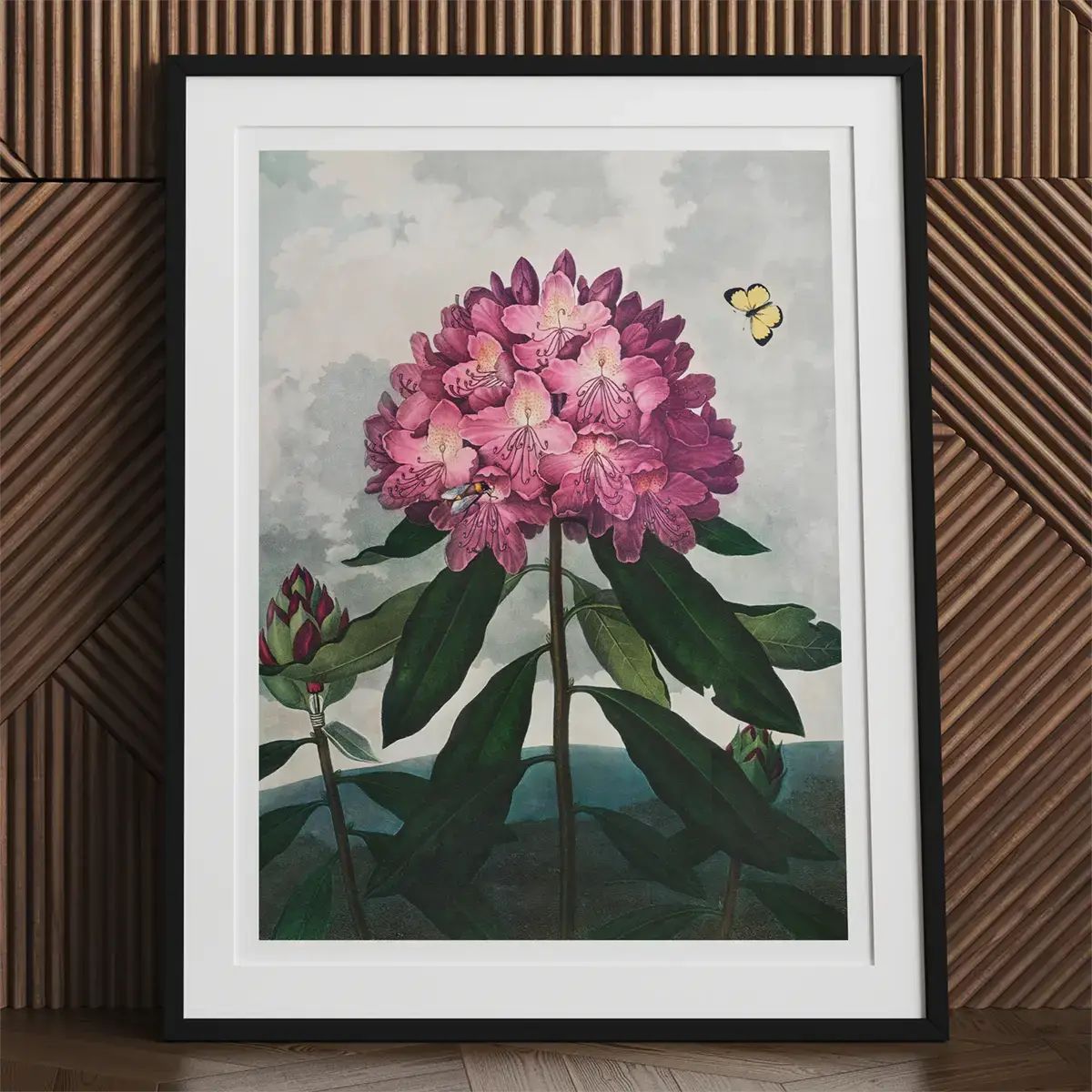
The late 18th and early 19th centuries ushered in Romanticism, an aesthetic movement that prized emotion over reason and looked upon nature as a source of spiritual and sublime experience. Thornton’s vision for “The Temple of Flora” fit hand-in-glove with this ethos. He wanted more than a straightforward botanical survey; he craved an immersive journey that fused scientific truth with heart-stirring landscapes.
Thornton’s project, rooted in Linnaean classification, harnessed the evocative power of Romantic art to kindle an emotional response in every viewer. He proposed a staggering seventy plates, each meticulously crafted to embody an otherworldly grandeur, though fiscal realities eventually pared that number down. Nevertheless, the original spirit of the plan glowed fiercely—“The Temple of Flora” would be no mere compendium but a rallying cry for British cultural might.
In a time when national pride was soaring and Britain flexed its imperial muscle, Thornton’s publication was an open declaration of artistic and scientific dominance. If the Enlightenment had revered cold reason, Thornton channeled the Romantic creed that yearned for wonder and awe.
Even as the global stage teetered with conflicts and shifting alliances, he persisted, certain that his work would broadcast Britain’s creative soul with matchless fervor.
Artists in Alliance: A Gallery of Collaboration

To achieve the majestic vision swirling in his mind, Thornton recruited some of the finest artists and engravers alive in Britain. Philip Reinagle, celebrated for portraits and animal studies, shaped many of the preparatory drawings. Abraham Pether, revered for his moonlit scenes, lent dramatic illumination to images like the ethereal “Night-blowing Cereus.” There was also Sydenham Edwards, a prolific botanical illustrator, and Peter Charles Henderson, a skilled miniaturist. Each brought a distinctive palette of techniques, moods, and perspectives.
Thornton himself contributed painting as well, famously creating “Roses with Nightingales,” an emblem of tenderness and musical hush in the heart of a blossoming garden. Meanwhile, the printmaking lay in the hands of figures like Richard Earlom, James Caldwall, Thomas Sutherland, and Joseph Constantine Stadler, each a master of aquatint, mezzotint, stipple engraving, or line engraving. These processes, sometimes employed in bold combinations on a single plate, layered luscious textures and atmospheric tones onto every floral subject.
Thornton spared no expense in the printing and coloring stages: certain impressions emerged already tinted, followed by painstaking hand-coloring to enliven every petal, leaf, and backdrop.
In each plate, one sensed the synergy of science and sentiment, anchored in meticulous detail and crowned with a flourish of emotional depth. Such devotion, however, carried a heavy financial cost—an undertow that would later threaten to pull Thornton under.
Key Figures in the Creation of The Temple of Flora
| Name | Notable Contributions |
|---|---|
| Robert John Thornton |
English physician and botanical writer, known for lecturing on medical botany. Conceived the project, oversaw production, painted “Roses with Nightingales.” |
| Philip Reinagle | English painter famed for portraits and animal subjects. Created the majority of the preparatory drawings |
| Abraham Pether | English painter lauded for atmospheric nocturnal scenes. Painted several landscape backdrops, including the iconic moonlight for “Night-blowing Cereus.” |
| Sydenham Edwards | Welsh botanical illustrator and publisher, prolific in his field. Contributed multiple botanical paintings |
| Peter Charles Henderson | British miniaturist with a gift for detailed floral representations. Painted various botanical subjects |
| Richard Earlom | English engraver, adept in mezzotint. One of the leading engravers for the project |
| James Caldwall | English engraver known for clean lines and refined artistry. Instrumental in engraving several plates |
| Thomas Sutherland | Scottish engraver, celebrated for marine and topographical views. Central to the engraving process |
| Joseph Constantine Stadler | German-born engraver active in London, skilled in tonal nuances. Engraved multiple plates, such as “The Blue Egyptian Water Lily.” |
The Art of Botanical Innovation
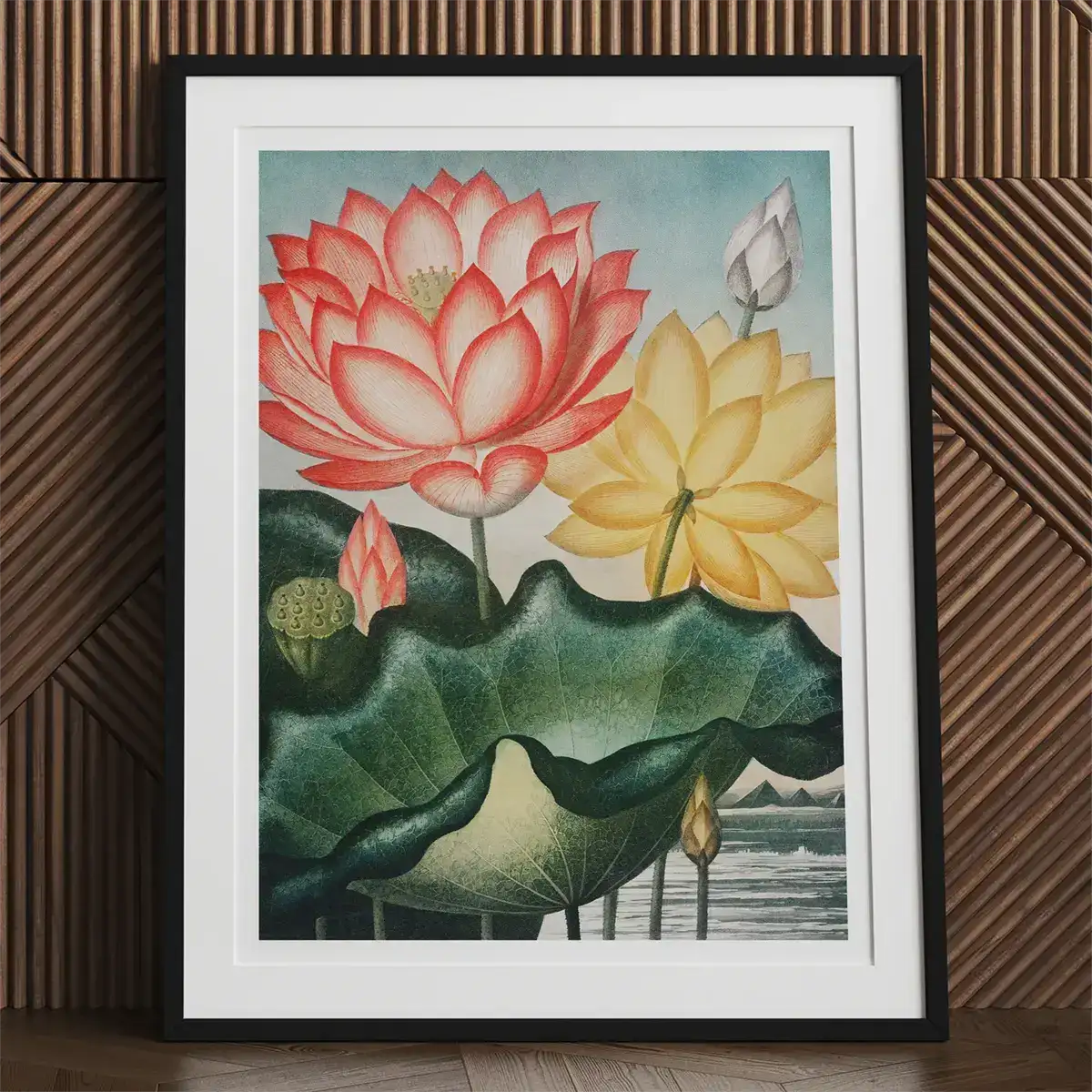
What made “The Temple of Flora” a radical leap beyond traditional illustration was Thornton’s determination to depict plants not as isolated specimens floating on blank pages, but as active participants in vivid, often dramatic landscapes. Where earlier works sacrificed background detail to emphasize a plant’s morphology, Thornton insisted on immersive settings that showcased each species’ symbolic essence and environmental context.
It was a technique thoroughly stamped by Romantic impulses: swirling clouds, luminous moonbeams, or a storm-lashed horizon endowed the flora with gravitas. In these pages, the “Dragon Arum” roared to life before a brooding sky, while the “Night-blowing Cereus,” courtesy of Abraham Pether’s signature moonlit style, glowed like a nocturnal secret whispered to the stars. Far from an incidental flourish, this approach served Thornton’s quest for emotional resonance, coaxing viewers to engage with the botanical realm at a deeper level.
No longer were these illustrations just references for classification or medical usage. Instead, each plate became a theatrical stage where nature performed. Indeed, “The Temple of Flora” might be seen as an invitation to revere the world’s living tapestry, prompting a visceral appreciation that extended beyond mere scientific interest. The project thus transcended Enlightenment-era rationality, reaching for a Romantic intimacy that recognized nature as both teacher and muse.
Printmaking Techniques Used in The Temple of Flora
| Printmaking Technique | Brief Description |
|---|---|
| Aquatint | Uses acid to create tonal areas, reminiscent of watercolor washes. Frequently appears in plates like “Hyacinths” and “The Blue Egyptian Water Lily.” |
| Mezzotint | Achieves rich, dark tones by roughening the plate, then smoothing areas for lighter passages. Features prominently in “Tulips” and “Night-blowing Cereus.” |
| Stipple Engraving | Relies on a series of dots to render shapes and tones. Often combined with other techniques to impart soft gradations and textural detail |
| Line Engraving | Involves incised lines directly into the metal plate. A staple for outlines and fine details throughout many of Thornton’s botanicals |
A Showcase of National Prestige
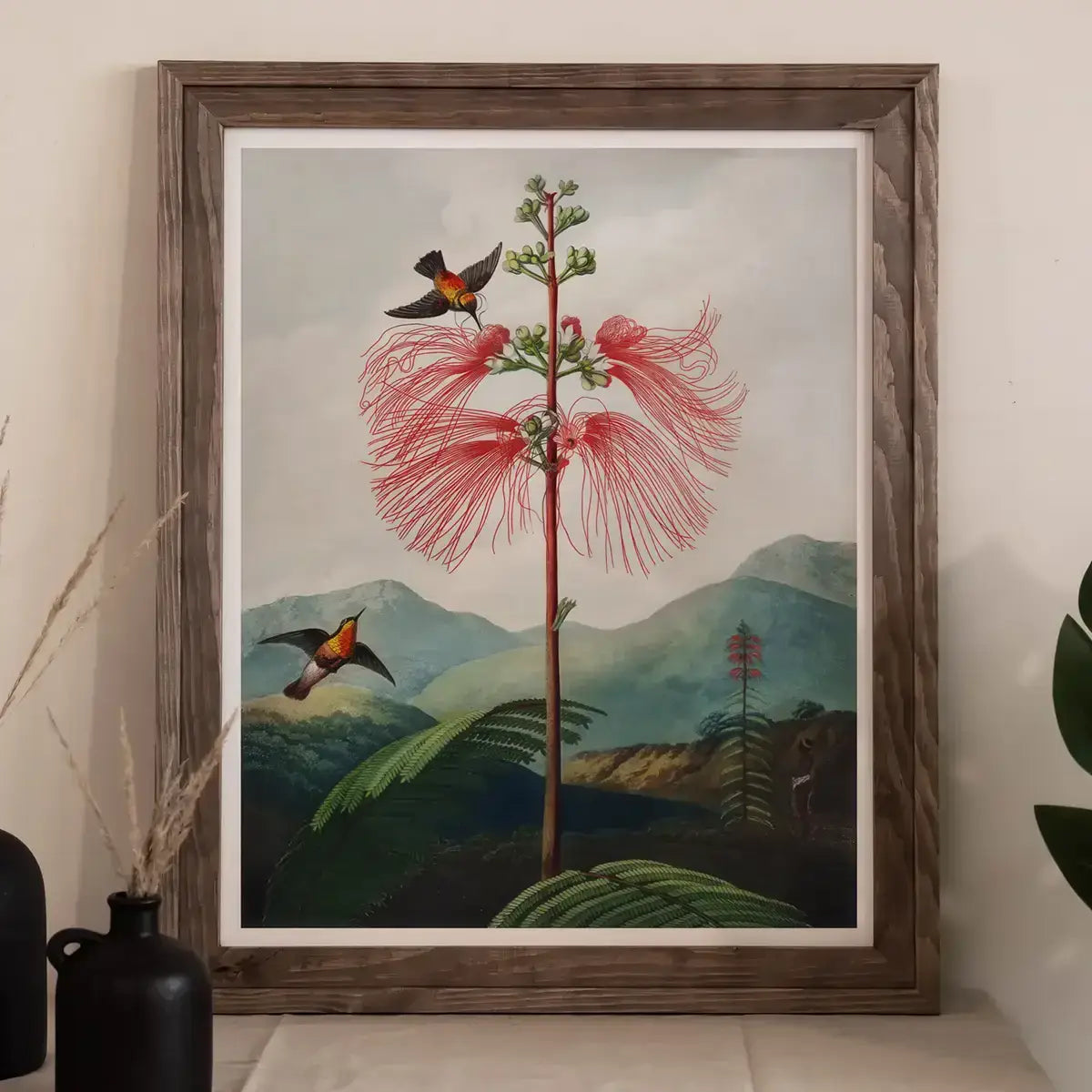
Running parallel to the book’s scientific ambitions was a powerful desire to propel British identity to the fore. Thornton explicitly wanted his volumes to outshine anything from continental Europe, especially in an age marked by expanding colonies and a surge of English pride. This impetus to dazzle was not just artistic: it was political, cultural, and deeply intertwined with a public hunger for the exotic.
Numerous foreign plant species appear across the plates, reflecting Britain’s recently expanded global reach. With explorers traversing the tropics and returning with seeds, cuttings, and enthralling stories, the idea of other continents became deeply woven into the British psyche. Thornton capitalized on that enthusiasm. He painted and published glimpses of far-flung flora—an exotic parade that also hinted at Britain’s rising power, with references to both scientific conquest and actual empire-building.
Symbolism, too, abounded. One especially piquant example was the allegorical plate titled “Cupid Inspiring the Plants with Love,” an artistic nod to the Linnaean emphasis on plant sexuality. And in the case of the “Night-blowing Cereus,” a smoldering volcano loomed in the background, a subtle reflection of the era’s swirling politics that saw Europe frequently rattled by revolutionary unrest.
Triumph and Turmoil: The Public Reception
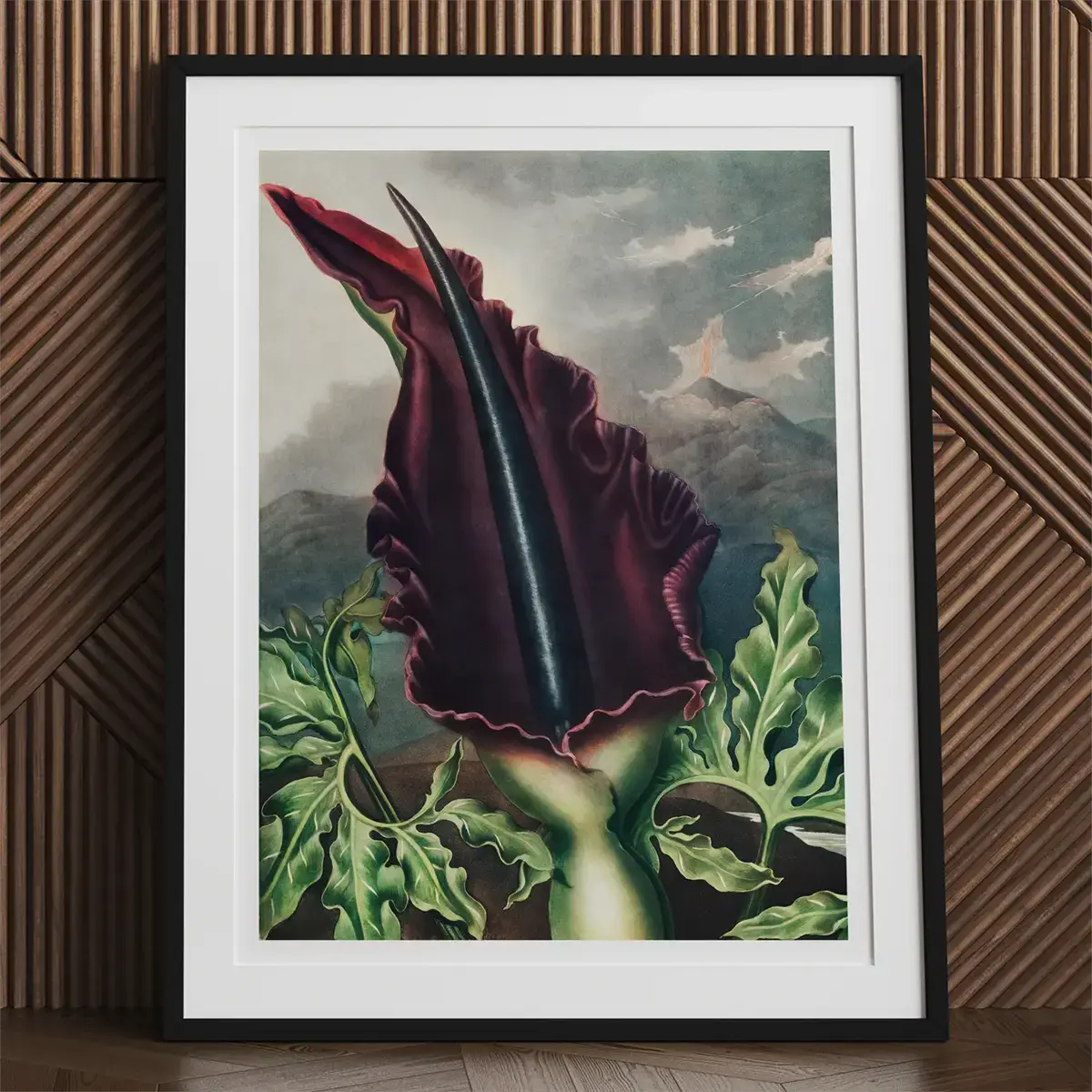
Despite the luxurious artistry and Thornton’s fervent hopes, “The Temple of Flora” did not sweep the market as he had dreamed. Though some contemporaries acknowledged its brilliance, sales proved meager, driving Thornton into a flurry of solutions, most of which ended in frustration. Royal patronage from Queen Charlotte offered a momentary prestige boost, yet it was not enough to offset the work’s enormous production expenses.
Part of the dilemma lay in the timing. Britain was at war, straining the economy and souring the appetite for extravagant purchases. The subscription model Thornton employed—an otherwise common approach for lavish, high-end publications—faltered under the weight of ballooning taxes and widespread economic insecurity. Moreover, the public’s love affair with massive botanical volumes was beginning to wane, or at least shift, leaving “The Temple of Flora” adrift in a sea of changing tastes.
In a desperate final move, Thornton attempted “The Royal Botanical Lottery.” He aimed to sell twenty thousand tickets, with the crowning prize being his original paintings for “The Temple of Flora.” While undeniably creative, the lottery failed to generate the capital needed to salvage his investments. Thornton found himself wrestling with the painful consequences of his dream. The haunting truth remained: his masterpiece had bloomed too grandly, towering above the practical constraints of his age.
Echoes of Genius Preserved
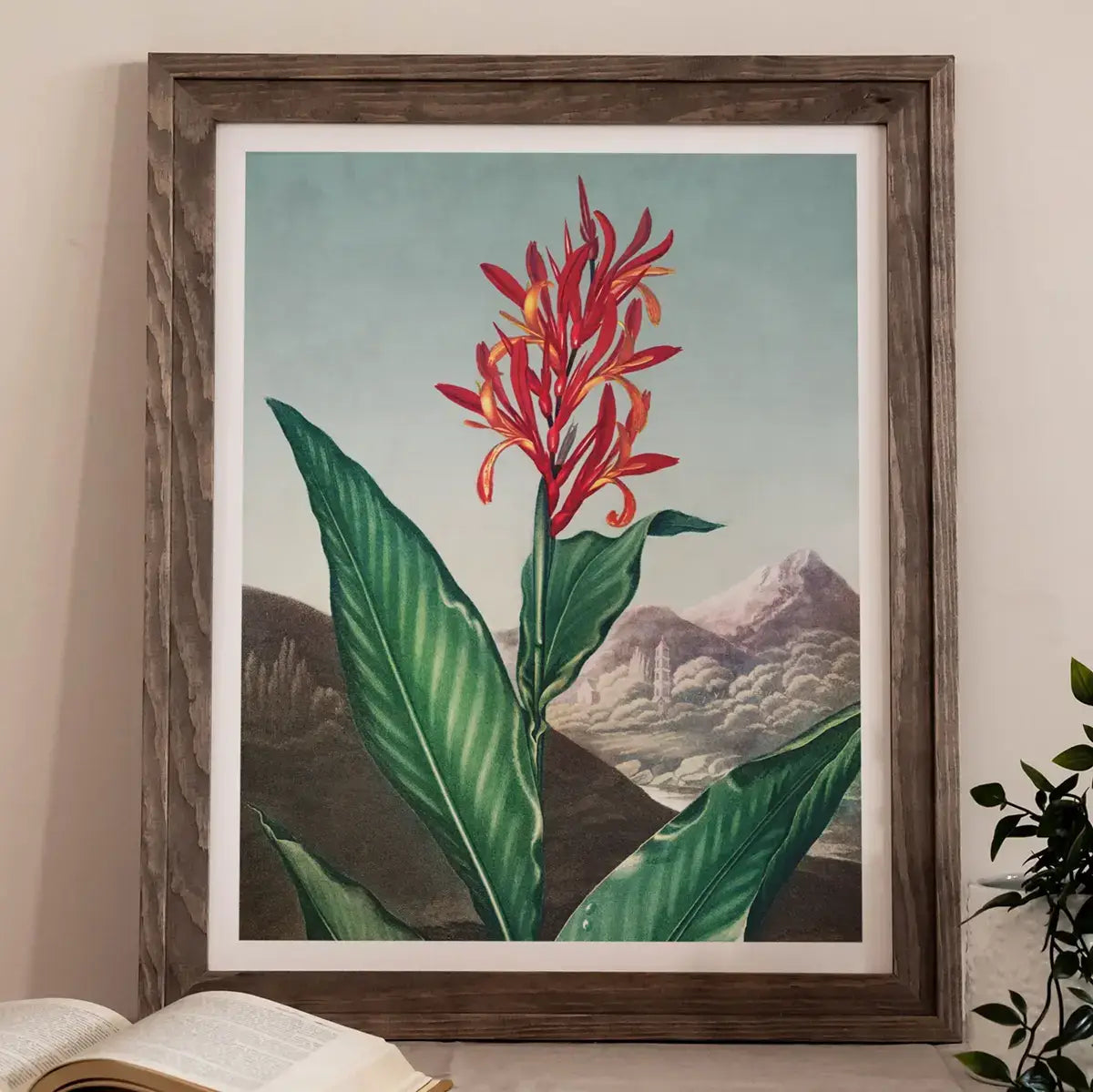
Financial ruin, however, could not eclipse the artistic zenith Thornton achieved. His single-minded dedication to synthesizing science, art, and cultural symbolism yielded a jewel that would endure for centuries. In time, the public’s critical eye recognized the sublime qualities hidden within “The Temple of Flora.” Scholars and collectors lauded its unwavering reverence for Linnaean principles, marveled at its Romantic flourishes, and delighted in the deeply layered interplay of technique and theme.
Today, original prints of “The Temple of Flora” can command considerable sums at auction, its allure continuing to rise in a modern era hungry for the intersection of knowledge and beauty. Rare book collectors guard these volumes like treasures, and fresh exhibitions regularly spotlight the boldness of Thornton’s vision. Indeed, new generations have found inspiration in his willingness to bend traditional illustration to the service of an expressive, emotionally charged aesthetic.
Thornton’s fate—debt-ridden, overshadowed, yet unwavering in his convictions—stands as a testament to the risks undertaken by visionary minds. His story reminds us that historically significant art seldom arises without conflict. And while his personal finances never recuperated, the potency of “The Temple of Flora” remains unassailable, granting Robert John Thornton an enduring seat among the pantheon of botanical illustrators who dared to blend human emotion and scientific inquiry into a single sweep of the brush.
Robert John Thornton: The Artist and the Physician
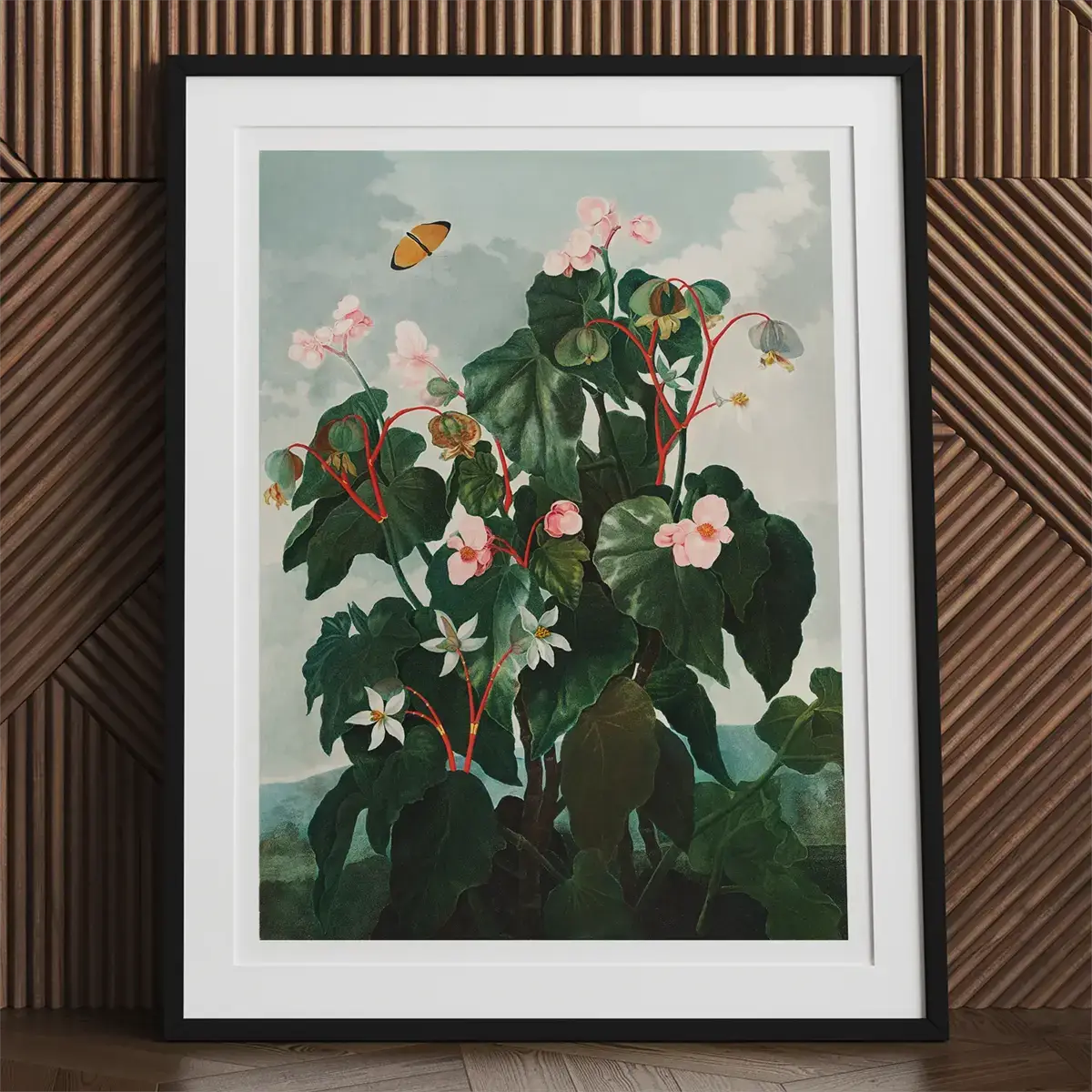
Aside from being a gifted botanical illustrator, Robert John Thornton was also an English physician. He specialized in studying diseases of the urinary system and was a member of the London Medical Society. Thornton's work on the Garden of Nature inspired him to take up botanical illustration. He believed that studying plants could lead to a greater understanding of the human body, which led him to publish his botanical works along with medical dissertations.
Thornton's botanical illustrations were not just pleasing to the eye, but were also scientifically accurate. His botanical drawings were a product of his careful physical observation and thorough study of botany. He combined his knowledge of botany with his artistic skill to create masterful botanical illustrations.
The Garden of Nature, which he curated, was a rich source of inspiration for Thornton's botanical artistry. His botanical illustrations reflected his passion for the natural world, and his admiration for its beauty and complexity.
Thornton's contribution to botany was not limited to his illustrations. He also wrote extensively on the subject, often including his own botanical observations and techniques. His work highlighted the importance of botanical study and helped popularize it among the general public.
Overall, Thornton's work as an artist and a physician can be seen as a testament to his boundless curiosity and his belief in the power of knowledge.
Collaboration and Influence
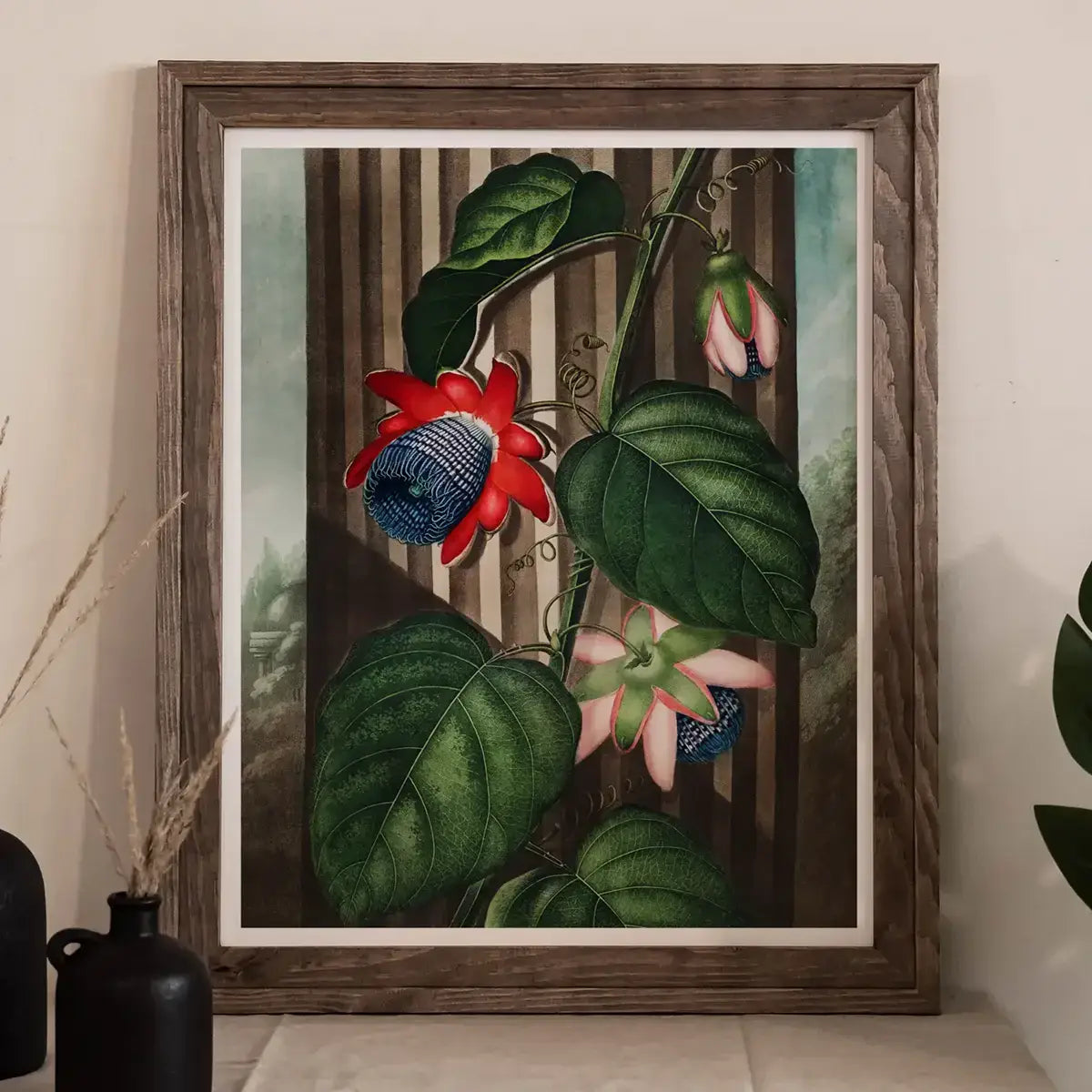
Robert John Thornton's illustrations of Carolus Von Linnæus' botanical discoveries were a significant contribution to botanical knowledge during their time. The two collaborated closely, with Thornton's illustrations of Von Linnæus' work helping disseminate his discoveries to a wider audience.
One of the most notable collaborations between the two was the publication of Thornton's "New Illustration of the Sexual System of Carolus Von Linnæus," which included 30 different prints showcasing Von Linnæus' botanical classifications. Thornton's skillful illustrations captured the beauty and intricacy of Von Linnæus' discoveries, helping others to understand and appreciate his system.
Thornton also included Von Linnæus' botanical classifications in his famous work, "Thornton's Temple of Flora." The intricate illustrations in the Temple of Flora not only showcased the beauty of plants but also helped to codify knowledge of botanical species. Thornton's emphasis on accuracy and attention to detail helped make his botanical prints not just beautiful but also scientifically valuable.
Carolus Von Linnæus: A Botanical Pioneer
Carolus Von Linnæus (1707-1778) was a Swedish botanist who is known as the father of modern taxonomy. He developed the binomial nomenclature system of naming organisms, which is still used today. Von Linnæus' system revolutionized the way scientists classified and understood organisms, and his influence can be seen in the work of many later botanists and taxonomists.
Thornton's illustrations of Von Linnæus' work helped to bring his discoveries to a wider audience, making it easier for botanists and other scientists to use his system and build on his work. Without Thornton's contributions, Von Linnæus' discoveries might not have had the impact they did on the world of botanical science.
Conclusion: Where Ambition and Awe Converge
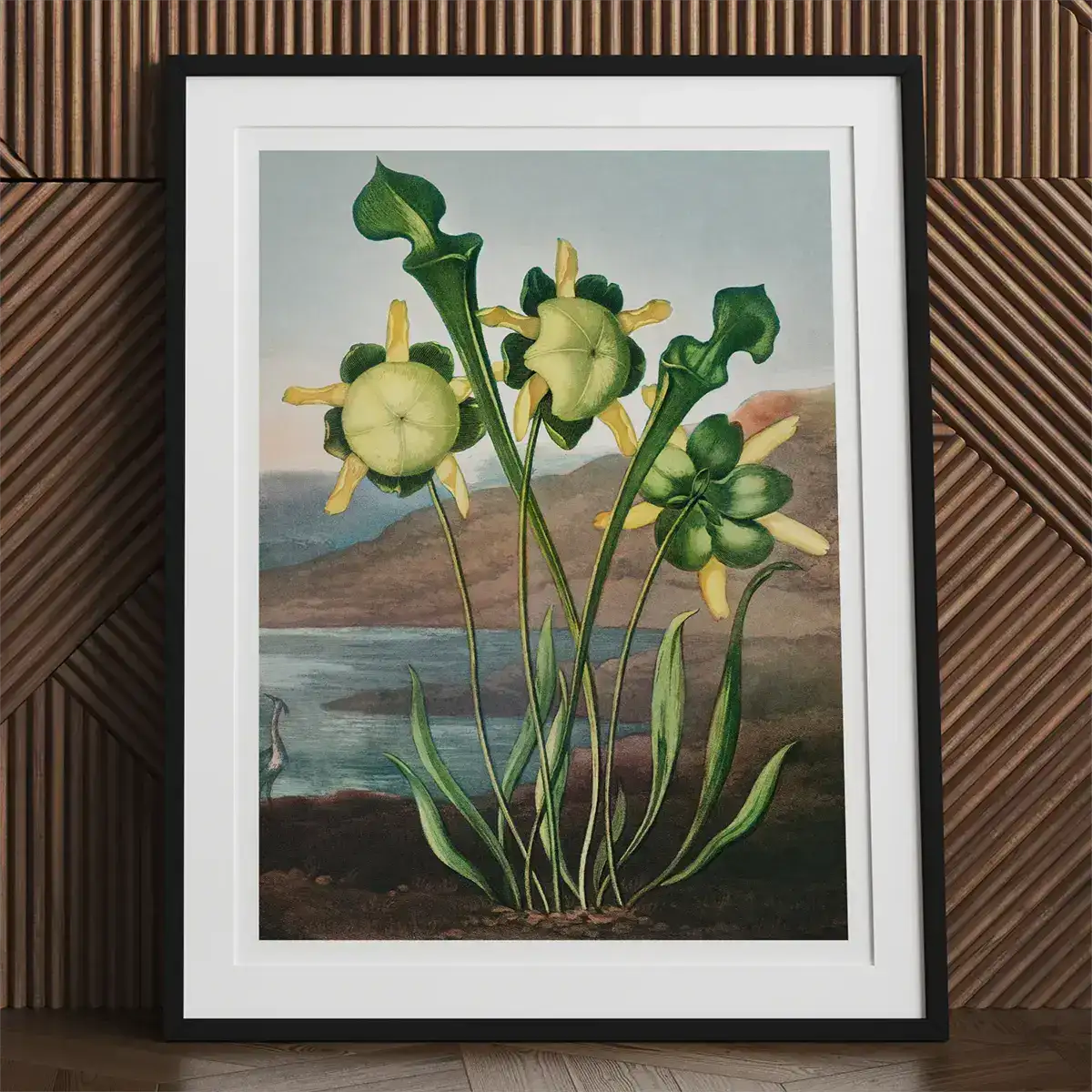
In the end, Robert John Thornton emerges as an archetype of the impassioned dreamer—someone who harnessed every dimension of his era to craft an artwork that still resonates. By fusing Linnaean methodology with Romantic theatrics, Thornton spoke not just to the scientific community but to anyone open to feeling the profound interplay between humans and the green, blooming testament of our planet.
His own predicament—a bold mind colliding with economic fragility—reveals how truly audacious the undertaking was. Yet “The Temple of Flora,” complete with fierce thunderstorms on one page and moonlit serenades on the next, stands eternal. Intricate details of stamen and pistil, dancing in tandem with swirling clouds and symbolic landscapes, remind us that science and wonder need not be at odds. Instead, they can merge into a singular, unforgettable tapestry.
Thornton’s story beckons us to see that in the midst of war, shifting tastes, and personal risk, visionaries remain undeterred. Even if the financial return eludes them, the intangible fruits—like redefined artistic boundaries and centuries-spanning admiration—often speak louder than coin. Thus, the echoes of Thornton’s dream still grace library shelves and gallery walls, a perpetual invocation to pause and marvel at what happens when knowledge, art, and fearless ambition intersect.














